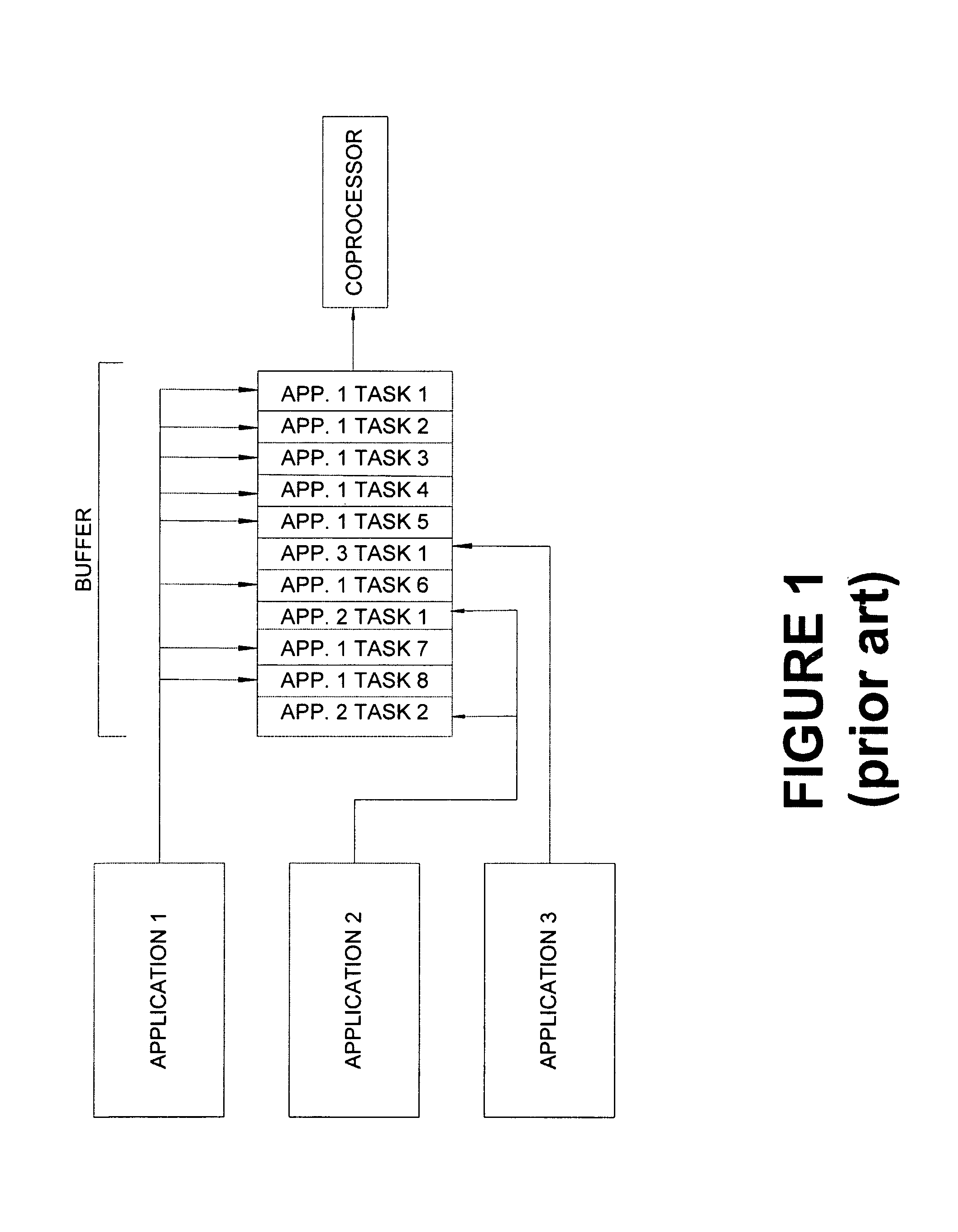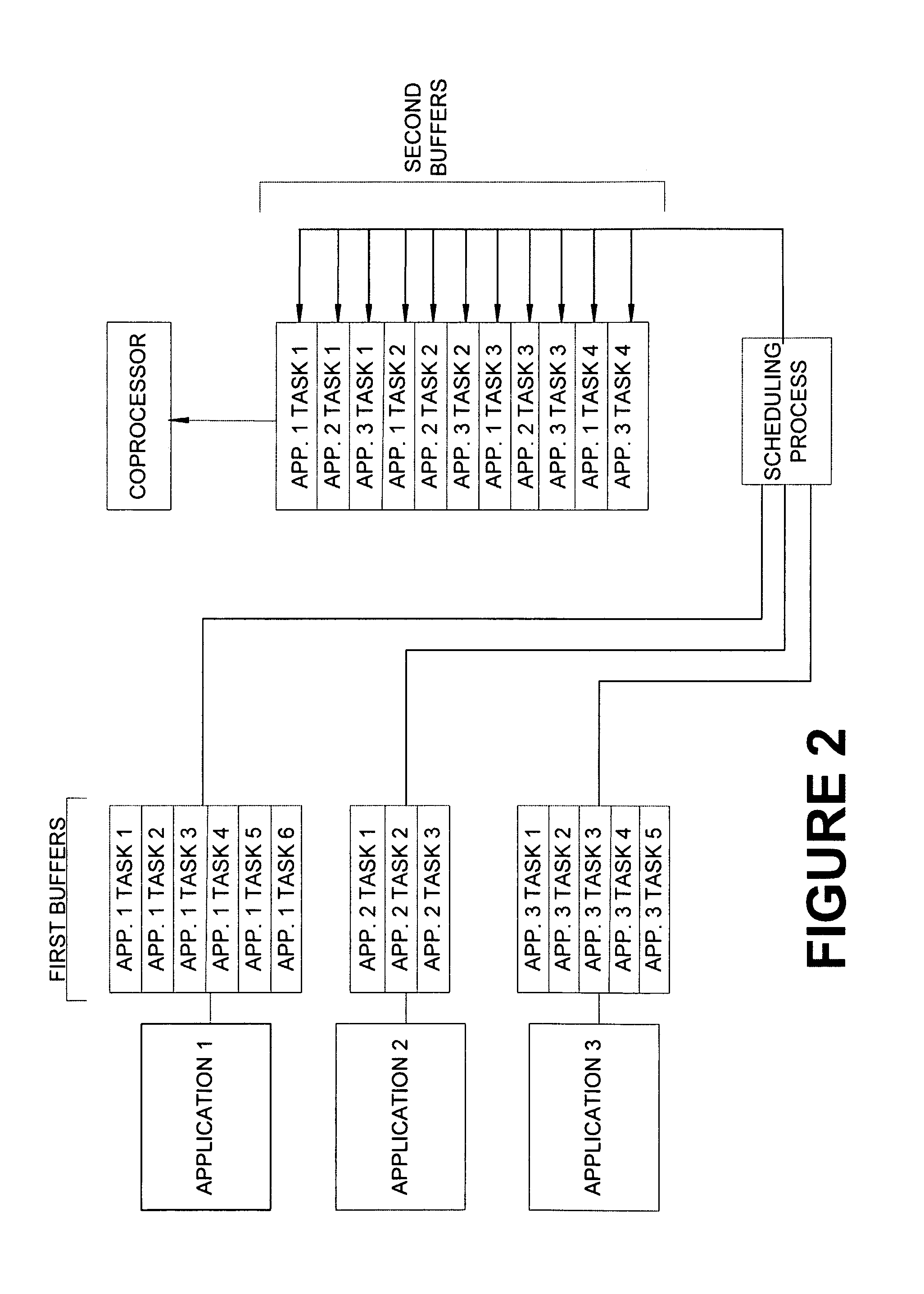Systems and methods for enhancing performance of a coprocessor
- Summary
- Abstract
- Description
- Claims
- Application Information
AI Technical Summary
Benefits of technology
Problems solved by technology
Method used
Image
Examples
Embodiment Construction
[0036]Several of the improvements accomplished by the present invention can be conceptually illustrated through a comparison of FIG. 1 and FIG. 2. FIG. 1 represents a typical prior art approach to task scheduling for a coprocessor. A buffer is provided which can be accessed by various applications, e.g., Application 1, Application 2, and Application 3. The applications can load tasks for the coprocessor into a buffer, and those tasks can be processed by the coprocessor after previously submitted tasks are completed. As illustrated, this approach leaves open a potential “hogging” of the coprocessor. In FIG. 1, App. 1 is hogging the coprocessor. App. 1 has requested that the coprocessor work on eight tasks, while the other two applications combined have requested work on only three tasks. In situations like these where multiple applications need the coprocessor, a system such as that provided by FIG. 2 may provide improved functionality.
[0037]FIG. 2 illustrates a system and method, in...
PUM
 Login to View More
Login to View More Abstract
Description
Claims
Application Information
 Login to View More
Login to View More - R&D
- Intellectual Property
- Life Sciences
- Materials
- Tech Scout
- Unparalleled Data Quality
- Higher Quality Content
- 60% Fewer Hallucinations
Browse by: Latest US Patents, China's latest patents, Technical Efficacy Thesaurus, Application Domain, Technology Topic, Popular Technical Reports.
© 2025 PatSnap. All rights reserved.Legal|Privacy policy|Modern Slavery Act Transparency Statement|Sitemap|About US| Contact US: help@patsnap.com



